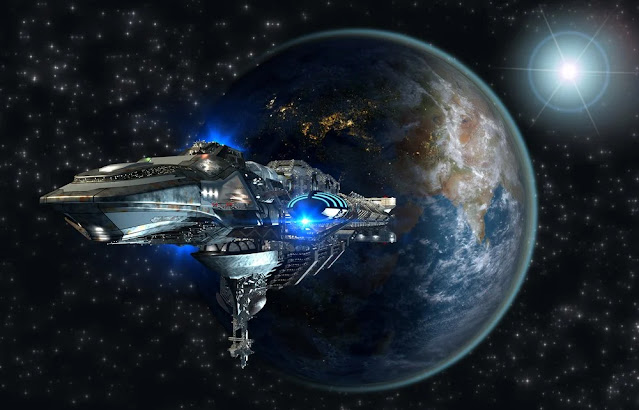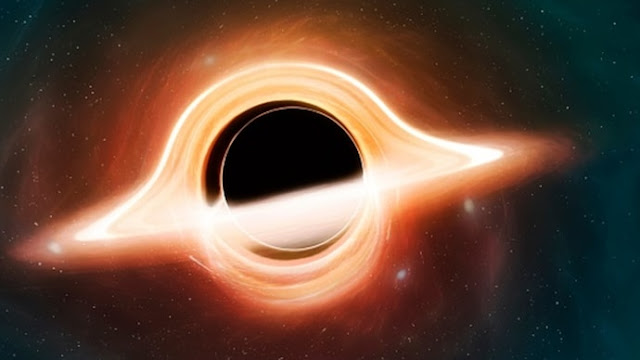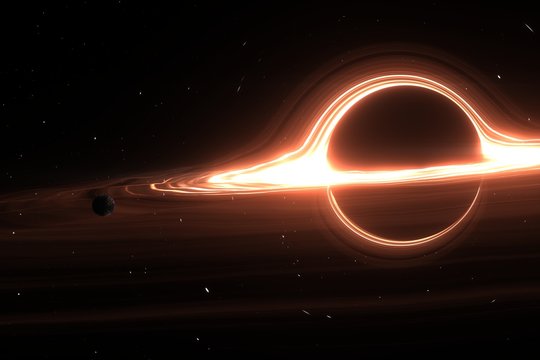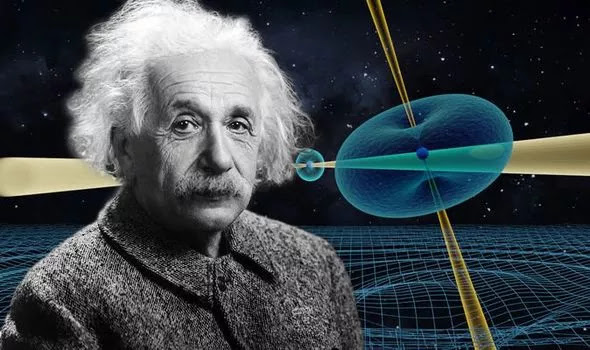What is the Black hole?
The history of black holes isn't
very long. 100 years ago, no one knew about black holes Because of Einstein’s
Theory of Relativity, black holes were later discovered. There are two parts to
the theory. The Special Theory of Relativity, and the general theory of
Relativity.
 |
| Black Hole |
Black Hole
The discovery of black holes is
one of the few major discoveries in human history. Albert Einstein, who is one
of the few great scientists in the field of physics in human history, was born
in 1879 and died in 1921. In the field
of physics, he also received the Nobel Prize. He mathematically proved that if
a lot of mass is concentrated in a place in the universe and it is almost zero,
negligible, then the gravitational force inside it
will be very high.
Albert Einstein
The General Theory of Relativity
published by Einstein in 1905, tells
us how speed influences time. If you are in a spaceship that is going very fast
or the speed is too high, time will slow down for you. Compared to those back
on Earth who weren't on the spaceship. In a spaceship, where time does not seem
to slow down, the word "relative" is crucial. You might assume that
time is passing as it usually does.
 |
| Space Ship |
Imagine a fabric of space-time the mesh of the way that all planetary objects are placed. The more mass they have, the more they bend the mesh of space-time. Not only physical objects are getting more attracted towards it, but time is also starting to dilate due to it, such as sound, heat, and light, gravitation has an effect on all of them. Everything is affected by the force of gravity, not only physical objects are attracted, but heat, sound, and light are also attracted, so This means that there can be objects in the universe in which the gravitational force is so high that they Absorb the light completely and if there are such objects it means that they will be completely black and we will not see them because the light will not be able to escape from them.
The theoretical concept
of Einstein
This is exactly what black holes
are, but when Einstein proposed his theory of general relativity, the concept
of black holes was only theoretical. Einstein knew that gravity influences
light and theoretically, there could be objects that could influence
light. But Einstein did not know that
black holes exist in reality.
 |
| Light Speed in Black Holes Example: |
 |
| Black holes in space are made of stars |
Scientists Research on
Black Hole
By the 1960s, researchers and
scientists finally believed that not only theoretically, but also
realistically, one day we would be able to see black holes because they
actually exist in space. Then there is no hole in space. Black
holes in space are made of stars, so there must be some material in their
center. Nuclear fusion reactions are taking place in their center. Due to these
reactions, heat and light are produced.
The life cycle of Star
If the star is not massive enough to turn into
a red joint, it can then become a planetary nebula or a white dwarf, but if it
is a massive star, it is a massive star when it runs out of fuel. It cools down to form a red supergiant and
then the supergiant explodes and becomes a supernova, leaving behind a very
small core. If the core is large, we
call it a black hole. The material is
compressed if a star as big as our Sun forms a black hole, the diameter of the
black hole will be only 50 km, so the volume decreases. Recognize what a
black hole looks like.
|
Stage |
Description |
|
Nebula |
A large cloud of gas
and dust in space. |
|
Protostar |
A dense core of gas
and dust that collapses under its own gravity. |
|
T-Tauri star |
A young star that is
still contracting and accreting mass. |
|
Main sequence star |
A stable star that
is fusing hydrogen into helium in its core. |
|
Red giant |
A star that has
exhausted its hydrogen fuel and is expanding and cooling. |
|
Asymptotic giant
branch (AGB) star |
A red giant that is
further evolving and shedding its outer layers of gas. |
|
Planetary nebula |
The shell of gas
that is expelled by an AGB star. |
|
White dwarf |
The hot, dense core
of a star that has exhausted its fuel. |
|
Neutron star |
The collapsed core
of a massive star that has exploded as a supernova. |
|
Black hole |
The collapsed core
of a very massive star that has exploded as a supernova. |
There are three or four types of
black holes:
|
Type |
Description |
|
Stellar Black Holes |
Formed from the
gravitational collapse of massive stars. |
|
Primordial BHs |
Hypothetical black holes that could
have formed in the early universe due to high density fluctuations |
|
Supermassive BHs |
Found at the centers
of galaxies, with masses ranging from millions to billions of solar masses |
|
Non-Rotating Charged
BHs |
No angular momentum but electric charge
present. |
Ø Stellar black hole
g
.jpg) |
| Stellar Black Hole |
The first is the stellar black hole, which is the most
common type of black hole. Those black holes that form from stars are estimated
by scientists to be our Milky Way Galaxy. There are at least Ten million to one billion
such black holes.
Ø Primordial black holes
 |
| Primordial Black Holes |
Ø Supermassive Black Holes
 |
| Primordial Black Holes |
These are supermassive black
holes so massive that they have a mass greater than the combined mass of one million suns and they fit into a
ball so large that the ball's diameter is ours As big as the solar system is,
scientists believe that the center of every major galaxy, there is a
supermassive black hole. Sagittarius A is the name of the supermassive black
hole in the center of our Milky Way galaxy.
A fourth variety of black holes may also exist, according to
scientists. The fourth form of a black hole the intermediate black hole will be
somewhere between the sizes of stellar and supermassive black holes, however,
it is impossible to say for sure.
 |
| Observed Mass Ranger of Compact Objects |
First Photo of a Black Hole
The first image of a black hole was captured in 2019. Even in this yellowish-orange colour was used to represent the
accretion disk. One thing that is clearly noticed in the actual photo, is that
particles on one side are brighter than the other side.
.jpeg) |
| First Photo of A black Hole |
There’s a simple reason for that the
particles spinning towards us seem bright to us, and those that are spinning away
from us, seem dimmer. This is due to the Doppler beaming effect. If you look at
the hole from the top, it will look like a normal, round disk. Only when we
look at the black hole from the sides do we receive this illusion.
What is Photosphere?
Apart from this, when you enter
the black hole, you will see the last circle of light it is the photosphere. Because
of the region's intense gravity, light begins to orbit the black hole. The photons
start orbiting the black hole. The light is going in a circle, forming a ring,
thus hypothetically, if you make it to this region of a black hole alive, you
might be able to see your own head.
 |
| Photosphere in Black Hole |
Event Horizon
After this point, is the boundary
of the black hole this is known as the Event
Horizon It is regarded as a border since, beyond this point, even light
cannot escape due to the extreme gravity. Everything is back beyond this point.
 |
| Event Horizon |
Einstein's General
Theory of Relativity:
In this theory, the center of the
black hole is termed singularity. Singularity is the region of a black hole, the
center where the curvature of space-time is infinite. The heavier the object,
the more the mesh of space-time will bend. This is bent so far in the case of a
black hole that it stretches indefinitely.
There are several intriguing
hypotheses, such as the one that claims light is absorbed by black holes,
preventing us from seeing within them from the outside.
· One theory says that inside the event horizon,
light reflects off of multiple points before reaching the singularity. So it's
plausible that something might truly be seen inside the Event Horizon.
 |
| 10th April, 2019 photo of Black Hole |
Conclusion:
· The thing that have seen for sure about black holes is the single photo. This photo was taken by the Event Horizon telescope, on 10th April, 2019. This proved the existence of black holes practically.



.jpg)






0 Comments